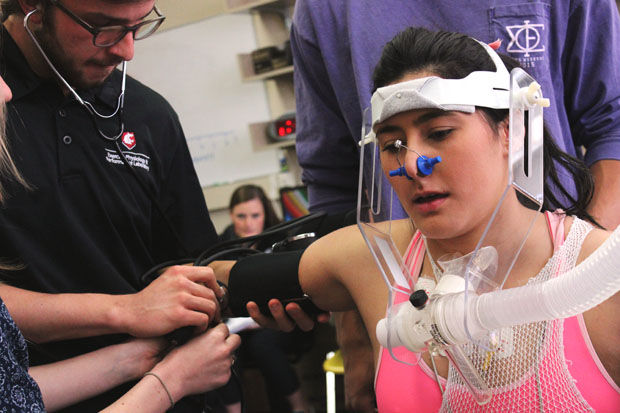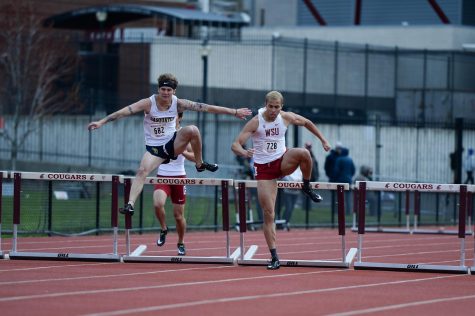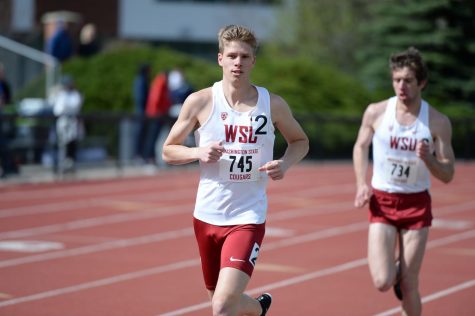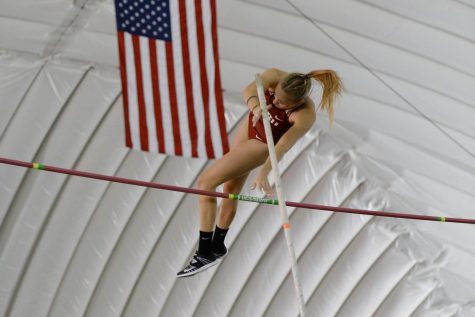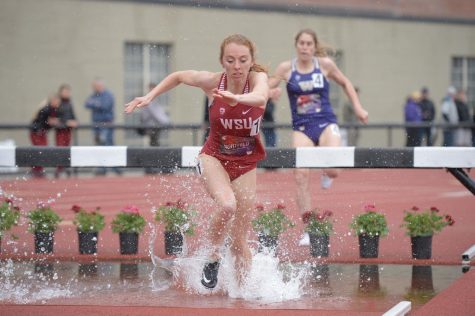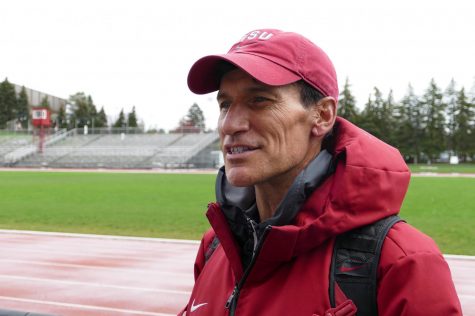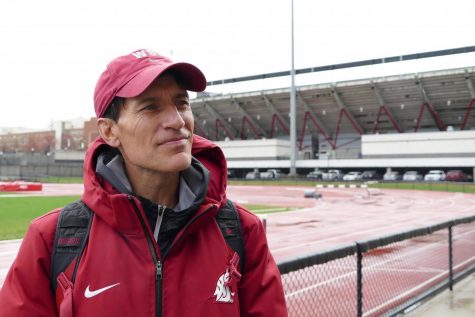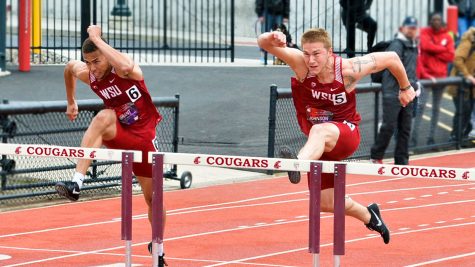Sports lab serves students and athletes alike at WSU
Going through the VO2 test in the Exercise Physiology and Performance Laboratory, a woman is tested on her performance through the monitoring of her oxygen intake.
April 30, 2015
Hidden away in the lower floors of Smith Gym exists one of Washington State University’s newest laboratories.
In the Exercise Physiology and Performance Laboratory (EPPL), there is as much physical effort exerted as the mental effort typical of science labs.
Instead of studying microscopic cells or molecules, the subjects here are living, breathing WSU athletes, students, and Pullman community members.
Lab director Christopher Connolly, lab coordinator Amanda McMahon, and their nearly two-dozen undergrad research assistants focus on research, teaching, and exercise testing for university athletes and the general population.
Their research has two goals: to look at different factors that can improve or impede physical activity during pregnancy, and to assess physical activity and fitness levels among different populations to try and help improve health, quality of life, and athletic performance.
The EPPL is also used as a teaching facility for kinesiology students in the introduction to exercise physiology. Connolly is the instructor of that course, and uses the lab to provide students hands-on, practical applications of the information they learn in the classroom.
The exercise testing component of the lab is where they think they can provide really useful data for not only WSU athletes and coaches, but also students involved in club or intramural sports. The high-performance tests they perform in the state-of-the-art lab are designed to help better understand what is going on with the athlete physiologically as they are exercising.
“Coaches are interested in understanding the objective data we can get from our tests,” Connolly said. “They can implement that into their training programs to make more effective and personalized programs that help them improve on the field.”
Where the EPPL provides the most meaningful service comes after they run the tests, when Connolly and his team analyze and interpret the data and present on each individual athlete and the team as a whole to show where the athletes are at physically.
“Our whole goal is to facilitate a means or a method by which these athletes can achieve more and be greater,” Connolly said.
The main tests they run in the lab include the VO2 max test and Bod Pod measurements. The Bod Pod is a machine that measures body composition, and it is one of the most accurate devices available. VO2 max testing relates to the performance aspect, and helps determine the maximum amount of oxygen an athlete can intake during sustained exercise.
Another important task is making sure the athlete is safe during the test by monitoring his or her body language and by positioning someone at the end of the treadmill. If the athlete starts to look fatigued or gives the sense that they are going to fall, the team steps in to make sure the runner is safely removed.
Once the preliminary steps are done the athlete is hooked up to the ECG monitor which records electrical activity of the heart, as well as the tube and mouthpiece used to measure oxygen levels.
The test begins with the athlete running at a light pace on a treadmill for a specific amount of time. In a continuous test, the athlete will keep running as long as they can through the increased intensity and the assistants have to monitor the athlete as they are going. If it is discontinuous, then the athlete will stop running after a certain amount of time and will rest, giving the assistants time to take measurements.
By stage four the test begins to become very strenuous for the athlete, but this is also when the environment becomes electric. Connolly and his assistants as well as any teammates or coaches in the room begin cheering the athlete on and encouraging them to keep running.
Tanner Lowry, a senior undergraduate assistant in the EPPL, said having WSU athletes in the lab keeps them on their toes, because even if it is a baseline test they want to provide accurate results for the athletes who are exerting such intense effort.
“The intensity is through the roof, it’s an awesome time,” he said. “You get the coaches in here, you get everybody pumped up, and it’s a blast.”
The test is done when the athlete reaches a point where they can no longer perform the exercise.
The equipment in the lab is then able to calculate the VO2 max number. A higher number indicates the athlete may have great aerobic endurance and they can utilize more oxygen to generate energy for activity.
So far the EPPL has worked with the women’s soccer team, the men and women’s basketball teams, as well as various members of the general public. And while the lab is not officially connected to WSU athletics, they have formed a great relationship with the teams and the strength and conditioning staff.
“I hope to see EPPL continue to grow and expand with WSU athletics and other club teams,” she said. “We offer great resources for measuring performance that can be beneficial and useful for several teams.”
More information is available on their Facebook page or online at labs.wsu.edu/exercisephys/.


